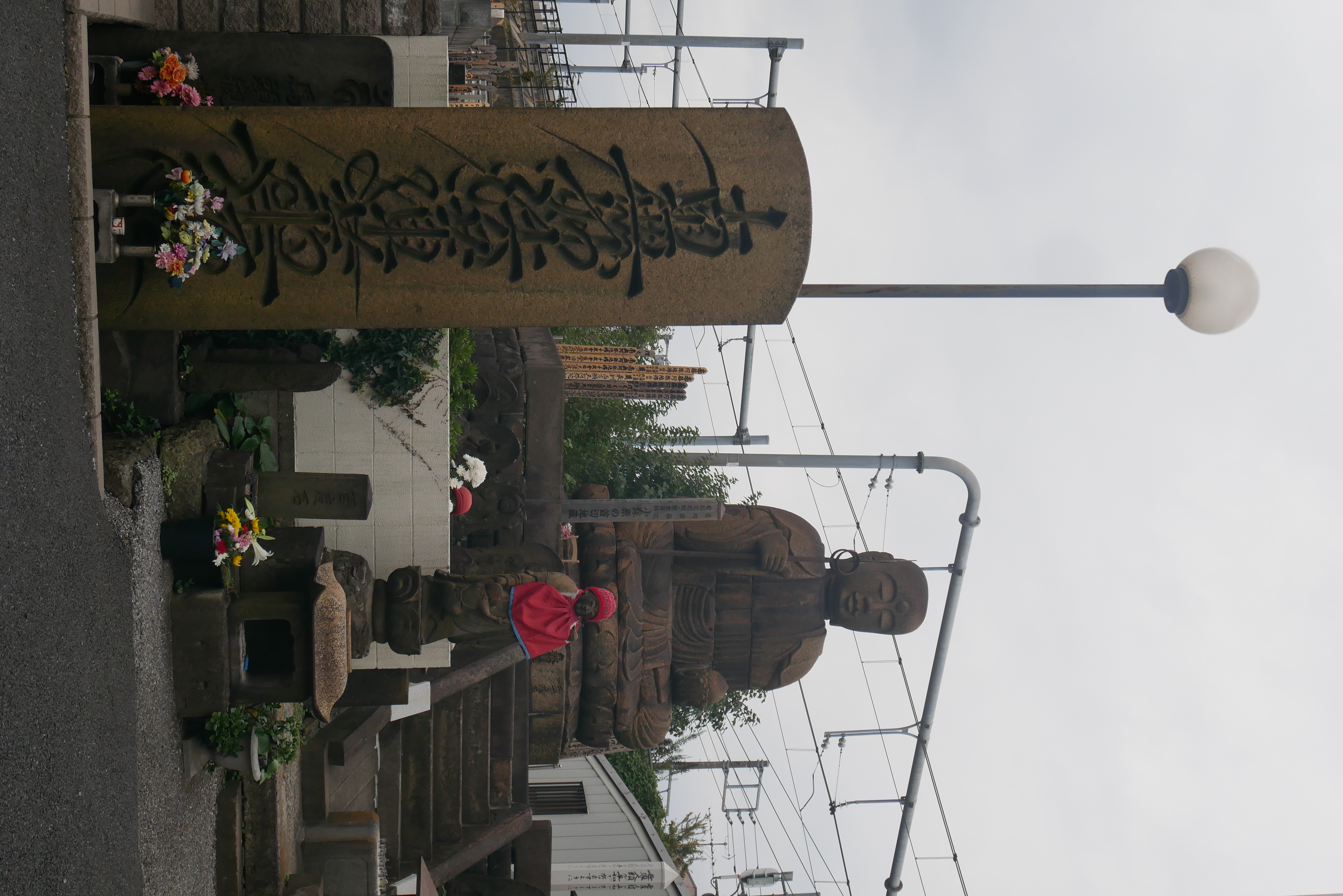Kozukappara Execution Grounds on:
[Wikipedia]
[Google]
[Amazon]
 The were one of the three sites in the vicinity of
The were one of the three sites in the vicinity of
The Japan Foundation LibraryNihon-kankou siteSightseeing document
{{coord, 35, 43, 53, N, 139, 47, 52.4, E, region:JP-13_type:landmark, display=title Edo-period sites Execution sites in Japan
 The were one of the three sites in the vicinity of
The were one of the three sites in the vicinity of Edo
Edo (), also romanized as Jedo, Yedo or Yeddo, is the former name of Tokyo.
Edo, formerly a (castle town) centered on Edo Castle located in Musashi Province, became the '' de facto'' capital of Japan from 1603 as the seat of the Tokugawa shogu ...
(the forerunner of present-day Tokyo
Tokyo, officially the Tokyo Metropolis, is the capital of Japan, capital and List of cities in Japan, most populous city in Japan. With a population of over 14 million in the city proper in 2023, it is List of largest cities, one of the most ...
, Japan
Japan is an island country in East Asia. Located in the Pacific Ocean off the northeast coast of the Asia, Asian mainland, it is bordered on the west by the Sea of Japan and extends from the Sea of Okhotsk in the north to the East China Sea ...
) where the Tokugawa shogunate
The Tokugawa shogunate, also known as the was the military government of Japan during the Edo period from 1603 to 1868.
The Tokugawa shogunate was established by Tokugawa Ieyasu after victory at the Battle of Sekigahara, ending the civil wars ...
executed criminals in the Edo period
The , also known as the , is the period between 1600 or 1603 and 1868 in the history of Japan, when the country was under the rule of the Tokugawa shogunate and some 300 regional ''daimyo'', or feudal lords. Emerging from the chaos of the Sengok ...
. Alternate romanized spellings are ''Kozukahara'' and ''Kotsukappara''.
The site is located in modern Minami Senju, Arakawa, Tokyo
is a Special wards of Tokyo, special ward in the Tokyo, Tokyo Metropolis in Japan. The ward takes its name from the Arakawa River (Kantō), Arakawa River, though the river does not run through or touch the ward. Its neighbors are the wards of Ada ...
, a three-minute walk away from Minami-Senju Station. Located next to Enmeiji Temple, a large part of the grounds are now covered by railway tracks.
It is estimated that between 100,000 and 200,000 people were executed here. Those executed include Hashimoto Sanai and Yoshida Shōin, who were executed as a result of the Ansei Purge
The was a multi-year event during the Bakumatsu period of Japanese history, between 1858 and 1860, during which the Tokugawa shogunate imprisoned, executed, or exiled those who did not support its authority and foreign trade policies. The purge ...
.
Sugita Genpaku
was a Japanese physician and scholar known for his translation of '' Kaitai Shinsho'' (New Book of Anatomy) and a founder of ''Rangaku'' (Western learning) and ''Ranpō'' (Dutch style medicine) in Japan. He was one of the first Japanese scholar ...
, Nakagawa Jun'an, Katsuragawa Hoshū
was a Japanese physician and scholar of ''rangaku'' (Western studies). 1751 – August 2, 1809 He served the Tokugawa shogunate as a physician and as a translator of Dutch language, Dutch. He was the older brother of author and ''rangaku'' schol ...
and their colleagues studied anatomy by conducting dissections at Kozukappara.
Kozukappara began operation in 1651, and continued until the Meiji period
The was an era of Japanese history that extended from October 23, 1868, to July 30, 1912. The Meiji era was the first half of the Empire of Japan, when the Japanese people moved from being an isolated feudal society at risk of colonizatio ...
. Executions were stopped in an attempt to convince Western powers to end the unequal treaties
A treaty is a formal, legally binding written agreement between sovereign states and/or international organizations that is governed by international law. A treaty may also be known as an international agreement, protocol, covenant, convention ...
with Japan.
See also
*Capital punishment in Japan
Capital punishment is a legal penalty in Japan. The Penal Code of Japan and several laws list 14 capital crimes. In practice, though, it is applied only for Murder in Japanese law#Aggravated murder, aggravated murder. Executions are carried out ...
External links
The Japan Foundation Library
{{coord, 35, 43, 53, N, 139, 47, 52.4, E, region:JP-13_type:landmark, display=title Edo-period sites Execution sites in Japan